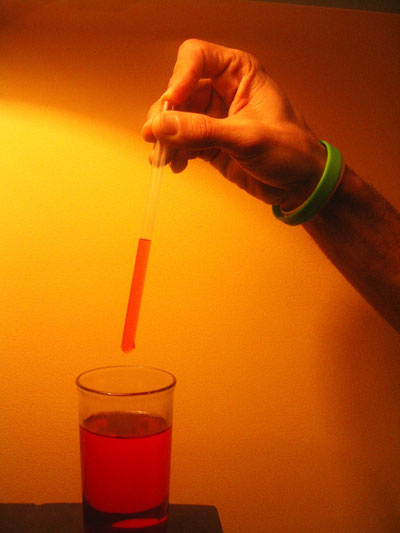Why does water not fall out of a straw when it is closed on one end?
1 Answer
Find a straw and dip it in a glass of water. Plug the top of it with your thumb. Then, lift the straw out of the water, and the water will not fall out.
This is because the atmosphere exerted a pressure upwards from the bottom to prevent the water from falling (the headspace above the water has some small downwards pressure that is minimized by the incompressibility of water).

The water doesn't move upwards since it is quite incompressible and exerts a reactive force back (normally known as the bouyant force when it pushes upwards to make something float), in addition to the force due to gravity:
At the bottom of the straw, where we have defined down as positive:
#sum vecF = vecF_(B) + vecF_g - vecF_"atm" = 0#
The net force is zero, so the water doesn't move.
Opening the straw top to the atmosphere again will make the air rush in from above, and the atmospheric pressure above the water increases, unbalancing the net zero force previously described, i.e.
#sum vecF = vecF_(B) + vecF_g - vecF_"atm" + vecF'_"atm" > 0# ,
and the water falls out. (

